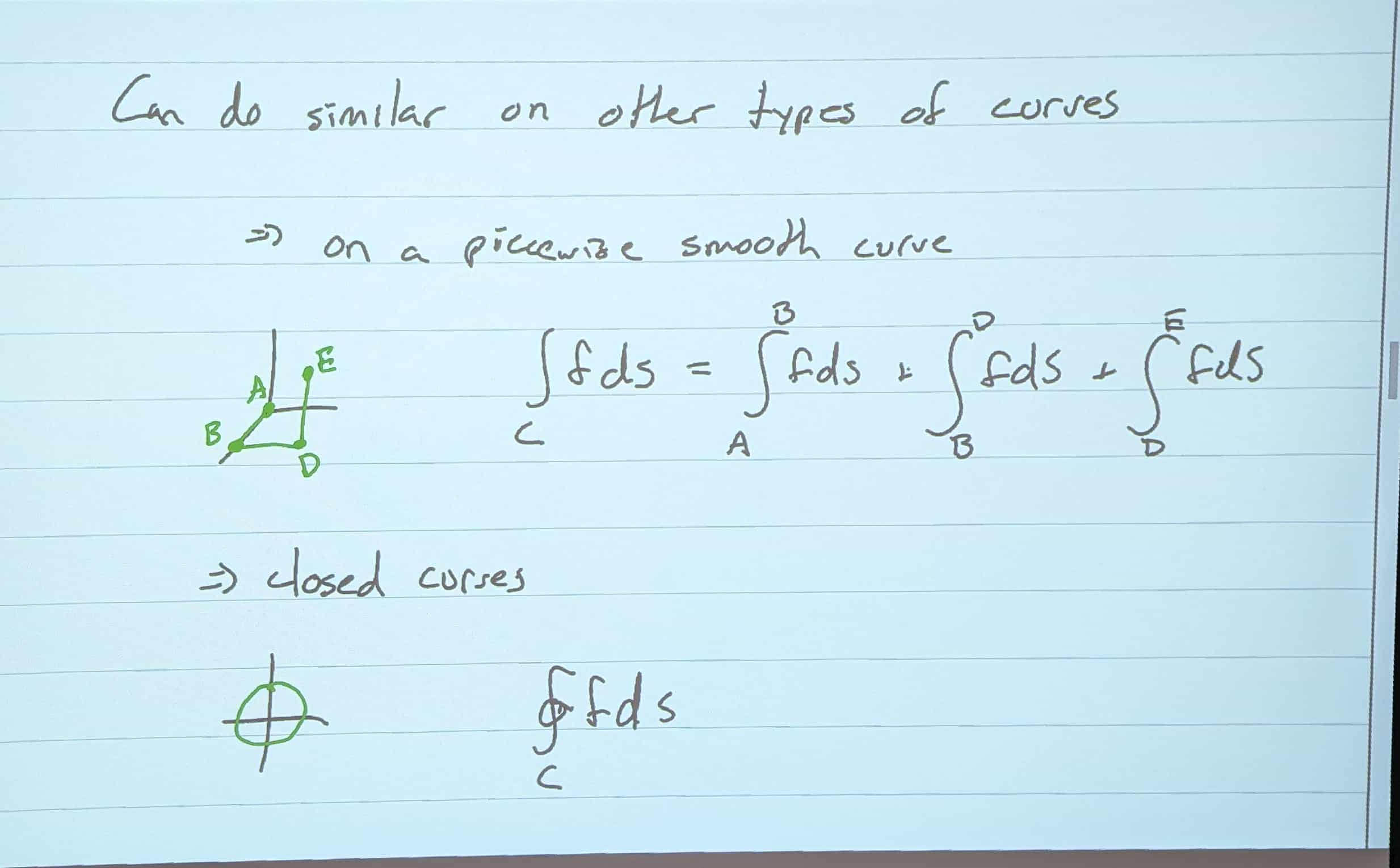In single variable calculus, we have definite integrals
We integrate f(x) along a straight line
Note: If f(x) =1
Now: Curve r(t) = (x(t), y(t), z(t))
This is a special case of “Line Integrals”
In 3D:
In 2D:
If (x,y,z) = 1, we have an arclength
How do we solve this?
We need to transform this into a definite integral!
Step 1: Find a parametric description of c
Step 2: Find f(x,y,z) on r(t) We plug in and get f(t)
Step 3: Find ds in terms of dt Recall that:
Here’s an abridged example, abbreviated as we did part of it yesterday. We plug in r(t).

Line Integrals and Vector Fields
Work
Work is a measure of F in the tangent direction!
OR
Flux
Work is a measure of F in normal direction! Think of this as the flow across the curve.
Remember, now N = T x K
We’ll also say for flux, f(t) = (P,Q) instead of X and Y
OR
Takeaways: Work = Tangential Direction, Flux = Normal Direction
Line Integrals and Special Fields
If F is conservative, ∇ x f =0
If F is incompressible, ∇ ⋅ f =0